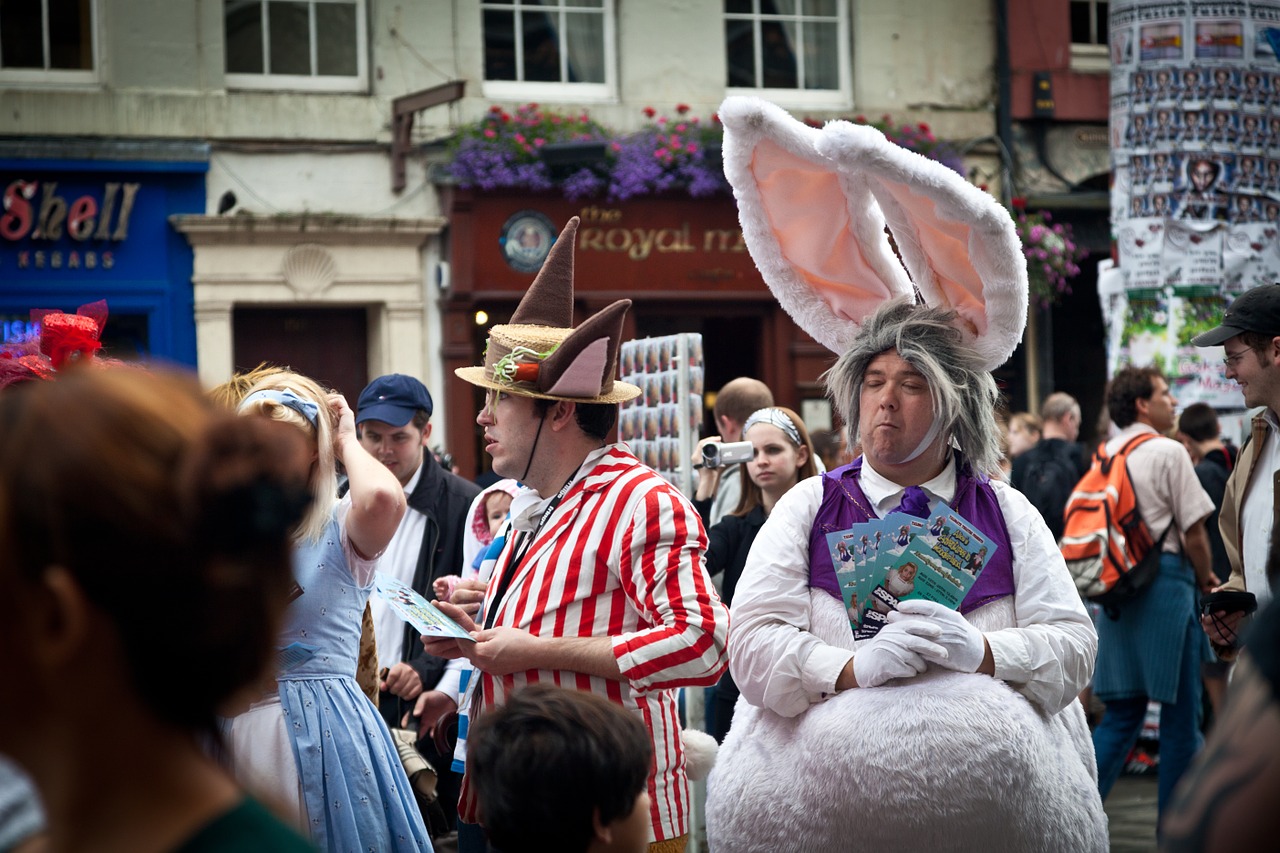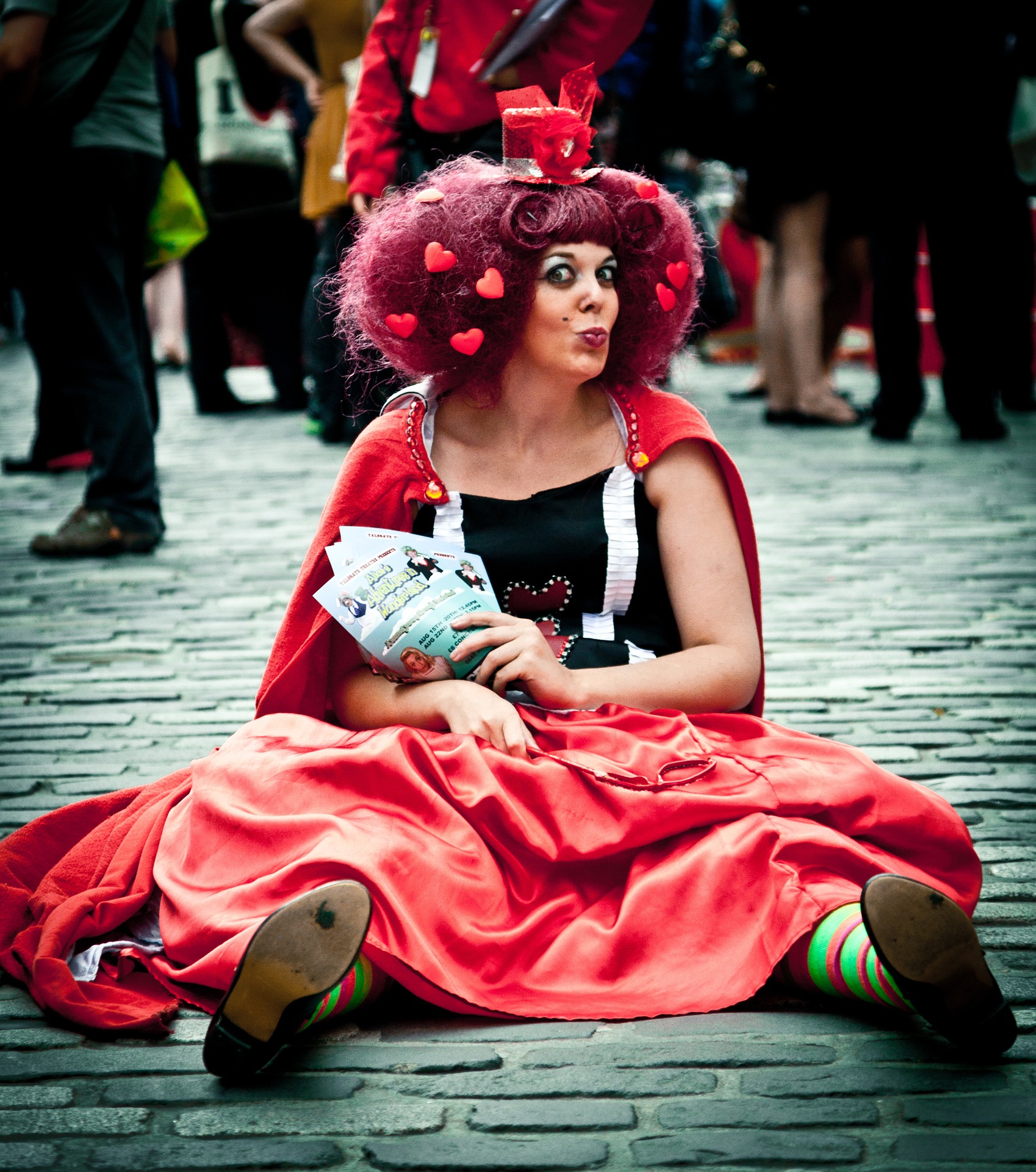Diverse, edgy, colorful, and sometimes downright controversial, the Edinburgh Fringe Festival has sprawled out in the Scottish capital every August since 1947.
Usually referred to as simply “The Fringe,” it is the world’s largest, interactive arts festival that attracts people from around the globe. In 2017, for example, there were over 300 venues to host the 3,398 shows, and the 53,232 performances. And from August 3 to 27, 2018 The Edinburgh Fringe Festival promises to be even bigger and better.
What is the history of The Fringe?
The beginnings of The Fringe were born in 1947. It started as an alternative option to the inaugural Edinburg International Festival. Eight companies who hadn’t been invited to perform showed up and decided to stage their own event.
Their philosophy was “if we can’t join them, we will have a better time on our own.” And from these small beginnings, The Fringe grew into the international festival that it is today.
Second only to the Olympic Games, the Edinburgh Fringe Festival now attracts more than 4.5 million people a year.
Rather than selection committees, auditions, and judges, The Fringe has an “open” policy. Because there is no censorship at The Fringe, it frees artists and performers to express their ideas openly and to celebrate their art. Consequently, the encompassing attitude attracts a mixed bag of people from around the world.
Those who are offended by nudity, profanity or politics don’t have to attend these events, as there are so many non-confrontational options.
Although literally hundreds of cities on all the continents – from Dublin to Hastings to Saskatoon – have tried to copy The Fringe, none have ever managed to capture the original spirit that continues to drive the original one in Edinburgh.

Who can perform?
The short answer is “anyone who can afford to get at the Edinburgh Fringe Festival and has a story to tell.” Thus, people arrive from far-flung places by plane, motorcycle, and even on foot.
Their motivation? The unforgettable experience of enjoying a moment in the spotlight and the opportunity to mix with others and take in some great events. It all adds up to keeping participants and audiences coming back year after year.
To perform at The Fringe, the two key steps are to register as a performer and then look for a venue to host the act. Fortunately, the massive volunteer staff associated with The Fringe help budding artists find space and — in some cases — sponsorship.
The international fabric of The Edinburgh Fringe Festival may well see Mali drummers performing in a venue just after a Chinese opera and before a jazz band from Mexico.
Yes, Shakespeare was right and all the world truly is a stage, but the ones at The Fringe get more attention. Some hope to make their debut into the world of the rich and famous at The Fringe where big-name stars share spaces with rank amateurs.
According to the BBC, stars who started their shining careers at the Edinburgh Fringe Festival include – to name but a few – Phoebe Waller Bridge, Mike Myers, Emma Thompson, Graham Norton, Hugh Laurie, and Mel & Sue.
One of the perks about attending The Fringe is being able to toss off the phrase, “Ah, yes, I saw them long before they became famous.”
What kinds of performances are on offer?
“Spoiled for choice” is the only way to describe The Fringe performances. Genres include theatre, comedy, cabaret, circus, physical theatre, opera, musicals, spoken word, and children’s events. In addition, to the performances, there are numerous exhibitions and events, many of which have free admission.
Comedy is a big draw-card at The Fringe and virtually all the comedians in the United Kingdom have launched their careers there. Another example is Robin Williams who performed with his student theatre company in a wild-west version of Taming of the Shrew in 1971.
Following on from the principle that “anyone who has a story to tell” can participate, people are inspired to put aside their stage-fright at spoken word venues. There they can share their experiences with audiences which are generally empathetic.
It is also an opportunity for poets to unleash their inner voices and for painters to display their canvases to the public.
Even though actors, dancers, artists, and wanna-be producers may not become house-hold names, performing at The Fringe looks good on a portfolio and may open other doors.

Where are the venues?
Basically, the entire city of Edinburgh and, at times, even the surrounding countryside for performances that require a rustic setting. For almost the entire month of every August, the hoards descend and all available spaces – theatres, parks, schools, pubs, churches, streets – become performing arts spaces.
Truly innovative venues at The Fringe include moving vehicles, swimming pools, and public toilets.
How to get tickets?
The official ticket office for The Fringe is located at the Royal Mile in the center of the city. Because it is simply good planning to book early, people can now reserve tickets on the phone or on-line.
And the box office opens early in the year, so that visitors can plan their trips around the productions they want to see.
Prices for the performances range from about £15 ($21USD) to free. Last year there were over two million tickets sold.
Although the price tickets can add up very quickly, it is still considerably less that London’s West End or New York’s Broadway.
What about 2019 Efinburgh Fringe Festival?
The 2019 Edinburgh International Festival will run from the 2-26 August. Book your seat in advance!
 Hire Expertise
Hire Expertise Bespoke Itineraries
Bespoke Itineraries Travel Carefree
Travel Carefree